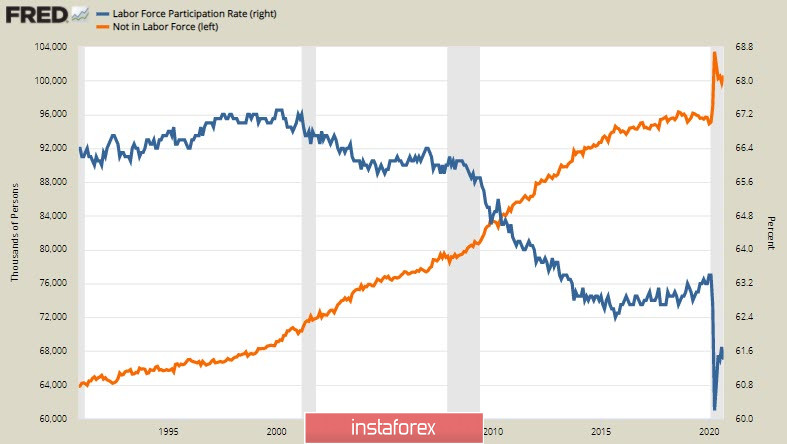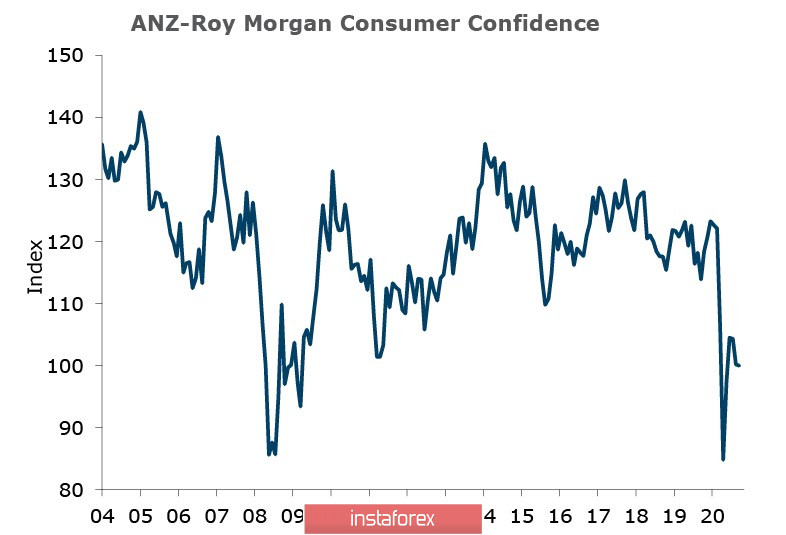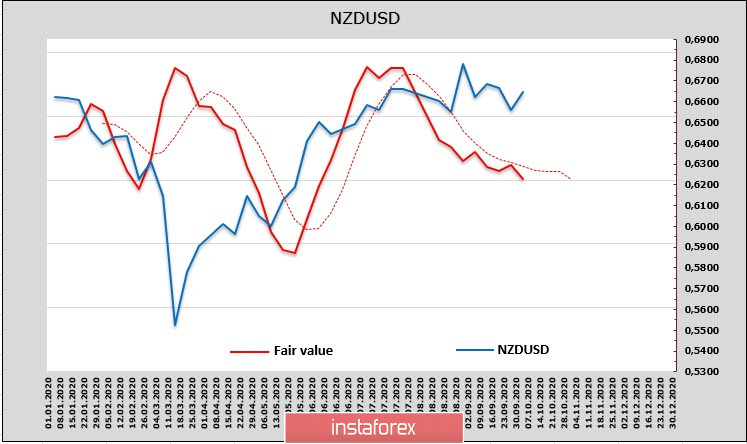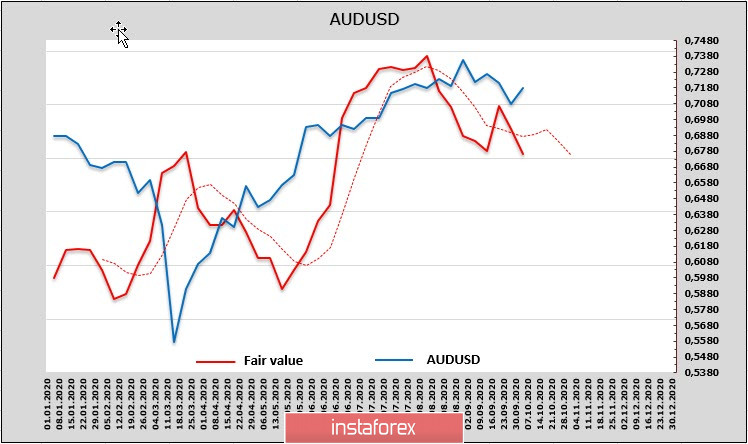The US labor market report for September did not lead to strong movements or reassessment of risks, as it came out mixed, and deviations from forecasts were in both directions. The number of new jobs amounted to 661,000, which is less than the initial estimate of 850,00. For the past two months, there is an upward correction of 145,000. On the positive side, unemployment fell from 8.4% to 7.9%, but labor force participation decreased from 61.7% to 61.4%.
The latter indicator is important for a general understanding of the situation. For decades, labor force participation has been declining, and the number of dropouts has been increasing, and no amount of presidential changes or tax reforms can start or even stop this process. This "American-style dead cross" characterizes the state of the US economy as accurately as possible.

Attempts to attribute the rise in unemployment amid COVID can only deceive the gullible, as well as manipulation of statistics that do not take into account millions of the desperate among the unemployed.
The coronavirus only accelerated the degradation process, but it is not the cause of it. To date, just over half of the 22.2 million jobs lost since the first wave of the pandemic in the United States has been restored. At the same time, there is a hole in the budget that cannot be closed in the coming years, and only large-scale incentives can slow down the process of sliding into the abyss.
In the current situation, the Federal Reserve System needs to actively stimulate the economy, but the upcoming elections will actually paralyze it, and lending to legal entities in the secondary market has been largely suspended. The pause in the Fed's actions is beneficial to the dollar, as the risk increases, which increases the demand for defensive assets, while the dollar has a good chance of resuming growth in conditions of insufficient liquidity supply.
NZDUSD:
In the previous review, we assumed that the kiwi will trade sideways. This assumption was justified, however, more and more factors indicate that kiwi is facing a bearish reversal.
Consumer confidence continues to be consistently below the long-term average, with the ANZ index turning down again in September following a pullback. Consumer alertness translates into a weak willingness to bear costs, which in turn increases deflationary pressures.

The ANZ World Commodity Price Index fell 0.2% in September, less than the 0.9% decline in August, but fully in line with the slowing inflation pattern.
Negative changes are not so pronounced as to lead to a change in expectations for the RBNZ policy, but against the background of a general decrease in demand for risk, they can push the kiwi further down.
The net long position on the New Zealand dollar declined to 210 million, the margin is minimal, the target price is directed downward reflecting the direction of financial flows. The likelihood of renewed growth in NZDUSD is low.

Kiwi starts to reverse to the 0.6480 / 6510 support zone with good chances to pass it on the first try. The targets are 0.6440 and 0.6370, after which the sales may intensify.
AUDUSD:
On Tuesday, September 6, the Treasury will present the federal budget for the 2020/21 fiscal year. It will detail the government's economic plan to support the recovery, in which leaks in the media point to legislative cuts in income tax, tax breaks on investment, increased funding for infrastructure, and widespread subsidies for employers who host apprentices. Earlier on the same day, the RBA Board meets. While the RBA is not expected to make any changes to monetary policy in October, the markets are leaning towards the RBA to cut rates at its next November meeting while simultaneously expanding quantitative easing.
Thus, tomorrow the aussie may get an incentive to weaken further.
The net long position on the Australian dollar declined over the week by 534 million to 637 million, formally the bullish advantage will still remain, but the trend in favor of selling is growing.

The aussie corrected slightly higher than we suggested in the previous review, but the long-term direction remains the same, that is, to the south. The current level of AUD is suitable for selling with an intermediate target of 0.7135 with a good probability of the impulse extension to 0.6800.
 English
English 
 Русский
Русский Bahasa Indonesia
Bahasa Indonesia Bahasa Malay
Bahasa Malay ไทย
ไทย Español
Español Deutsch
Deutsch Български
Български Français
Français Tiếng Việt
Tiếng Việt 中文
中文 বাংলা
বাংলা हिन्दी
हिन्दी Čeština
Čeština Українська
Українська Română
Română

